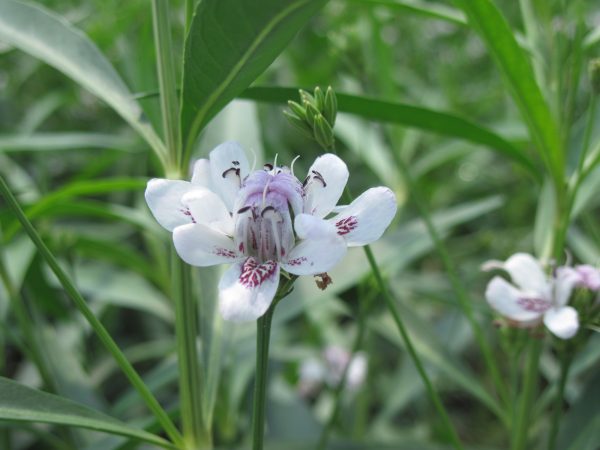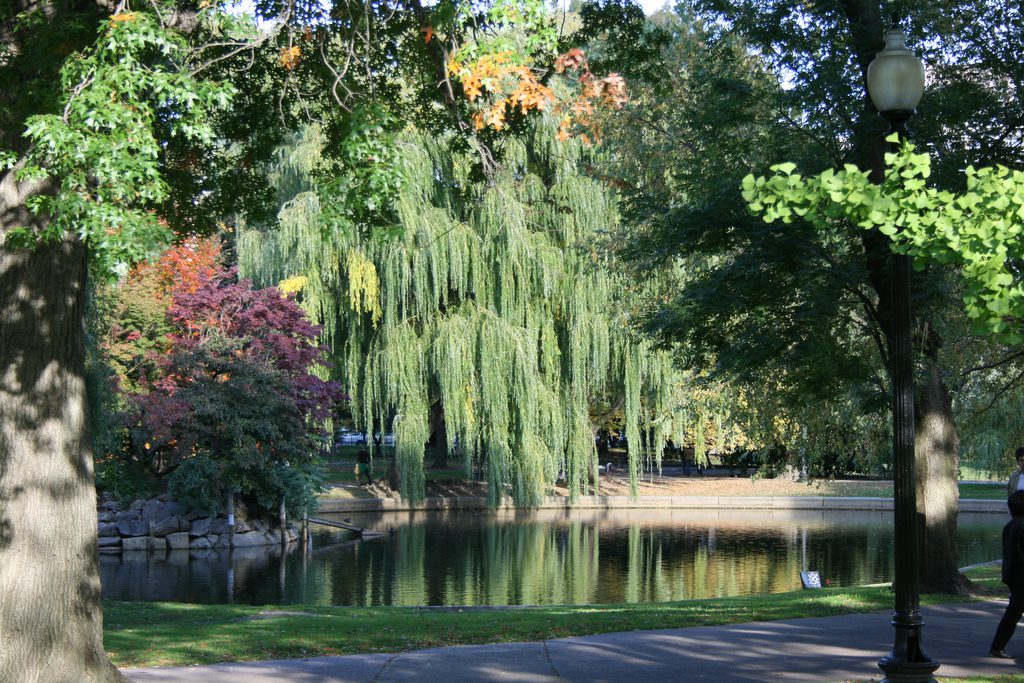The wind in our willows

Myth and legend surround willow trees, as well as facts. The graceful weeping willows have long narrow leaves and limbs drooping from the tree trunk, an appearance sometimes associated with death and dying. Shakespeare uses willow trees in several of his plays, including the “Willow Song” in Othello, and in Hamlet Ophelia breaks willow branches and tosses them in the river. The willow is also associated with ghosts, and the “whomping willow” plays a prominent role in the Harry Potter series of books.
Willows, of the genus Salix, are also called sallows and osiers. They comprise more than 400 species of deciduous trees and shrubs. They are found in cold and temperate regions of the Northern Hemisphere and are dioecious, which means they have distinct male and female flowers.
Willow trees are cross-compatible and many hybrids occur, both naturally and in cultivation. The weeping willow (Salix sepulcralis) is a well-known ornamental hybrid, is a mix of Peking willow (Salix babylonica) from China and white willow (Salix alba) from Europe. Weeping willows grow quickly and are a good shade tree. They grow especially well near water. Weeping willow cuttings were carried along trade routes from China early in the time of interstate commerce.
Willow trees produce a milky sap which possesses a substance known as salicylic acid. Edward Stone, a British minister, isolated salicylic acid in 1763, but it was not widely used in medicine until 1897 when a chemist named Felix Hoffman created a synthetic version that was gentle to the stomach. His company, Bayer, produced this creation as the first aspirin.
Willow oaks (Quercus phellos) are native to our area, the eastern and central United States. They are oaks (in the red oak group), not willows, but their leaves mimic the narrow willow leaves. They are found naturally on lowland areas, along floodplains and streams. They are also used as ornamental trees because they grow quickly, are hardy, and can withstand both sun and shade. They sometimes grow more rapidly than planners anticipate which can result in cracked sidewalks.
Another interesting species in our area with “willow” in its name is the water willow. It is an herbaceous perennial wildflower that grows in the middle of streams and rivers, known as an emergent aquatic, found up to a few feet above the water line. They are found in wetlands with stagnant water or slow to moderate currents. They have stems with pairs of opposite leaves, and white to whitish-purple blooms.
Water willow flowers are pretty and bloom for a long period. Though not closely related to the willows of the genus Salix, they are also graceful. You can almost imagine a wind gently blowing any of these species and gracefully moving the foliage, a symbol of serenity and peace.

Weeping willow overlooking the pond in the Boston Public Garden illustrates why the trees are beloved. Photo: Jill Clardy via Flickr, Creative Commons